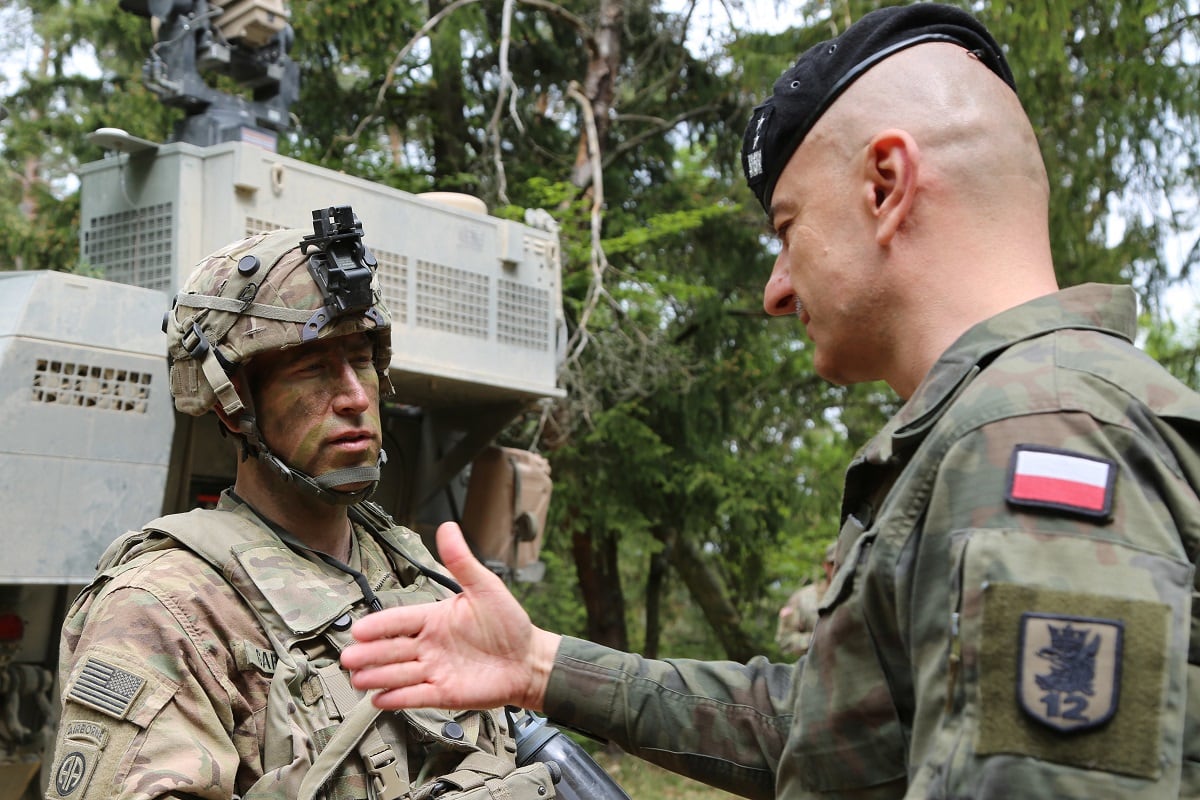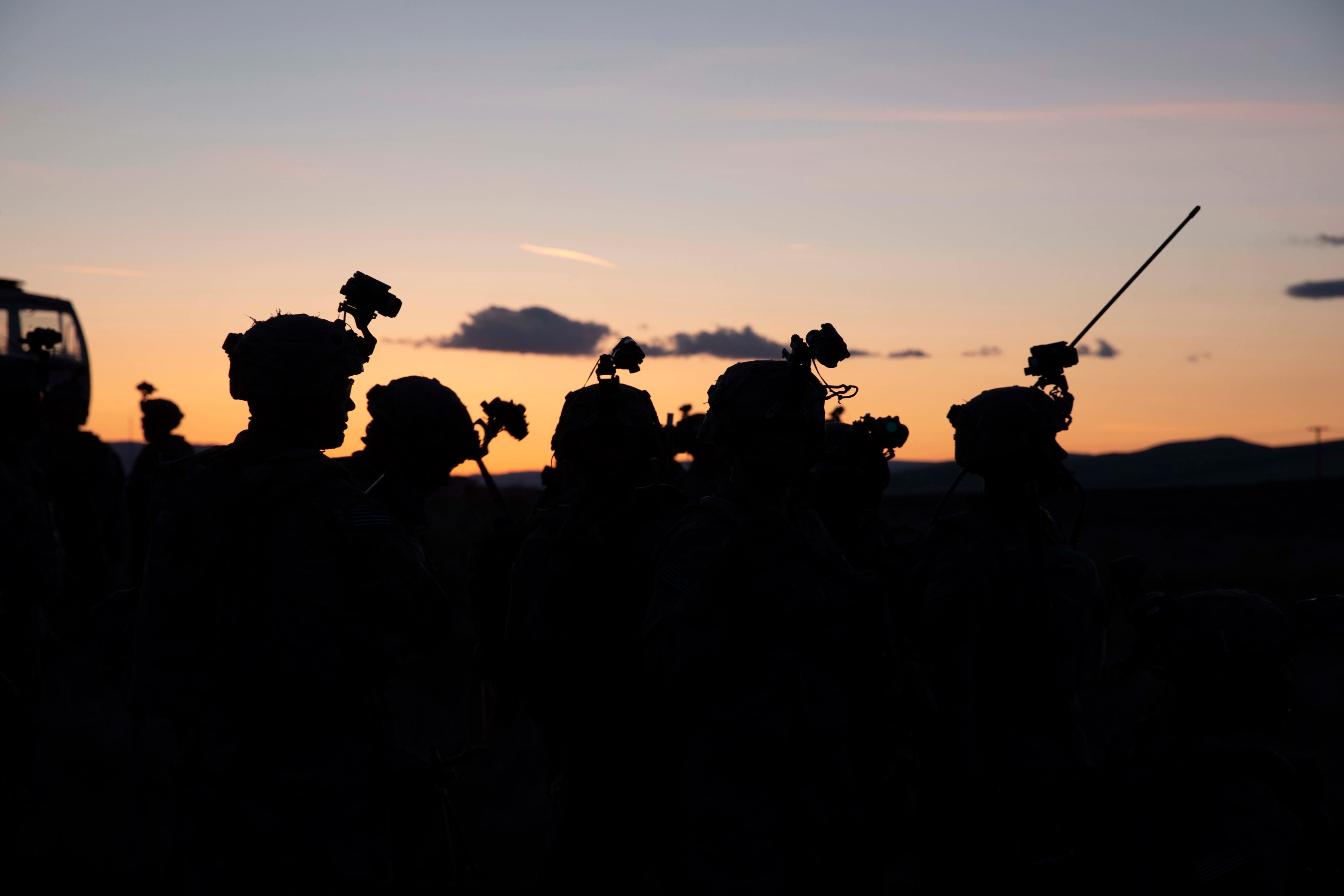WASHINGTON — Though the Multi-Domain Task Force in Europe is only beginning to take form, it’s already expected to help the U.S. Army shape its doctrine relevant to possible ground campaigns against near-peer competitor Russia.
So far the Army has largely focused on how the Multi-Domain Operations, or MDO, concept might look in the Indo-Pacific theater. Over the past couple of years, the service brought back lessons learned from its pilot Multi-Domain Task Force in the region and applied them to the MDO concept that will ultimately serve as the Army’s primary war-fighting doctrine.
The National Defense Strategy, released last year, focuses on great power competition with Russia and China, and the MDO concept is designed to enable the U.S. Army to operate against those near-peer competitors across air, land, sea, space and cyber domains.
The doctrine is intended to lay out how Army capability and strategy will prevent conflict, shape the security environment, win in large-scale ground combat operations and consolidate gains.
The task force will provide U.S. forces and allies in the theater with multiple options to deal with great power competition, Army Chief Gen. James McConville told Defense News in an exclusive interview.
“We’re building capabilities of the multidomain task forces,” he said, “around information intelligence, cyber, electronic warfare and space capability. And then based on that, they’ll be integrated into long-range precision fires and effects capability and then supported by the other types of enablers that the force needs to do their mission.”
The Army sees the Multi-Domain Task Force as different in each theater where those types of units are deployed, McConville said. “We will augment them based on what they need to conduct the mission,” he explained.
RELATED

The Europe-based task force will have fundamental differences to the task force in the Indo-Pacific theater, said o Lt. Gen. Eric Wesley, the Futures and Concepts Center deputy commanding general. For example, the European area of operation is much smaller than that of U.S. Indo-Pacific Command, he told Defense News, and the terrain is largely land based.
“So what we have to do is optimize the capabilities in Europe,” Wesley said, “so you have a lot more agility in moving the Multi-Domain Task Force, as an example, because of the ground-based platforms.”
The task force in Europe will particularly shape doctrine relevant to a large ground campaign, he added.
But while the task force in Europe will be different, it will also be modeled after that in the Pacific. It will be a fires unit with additional capabilities, Gen. Mike Murray, the head of Army Futures Command, said earlier this summer.
The Army Futures Command is in charge of Wesley’s outfit — formerly known as the Army Capabilities Integration Center — which is tasked with developing the MDO concept.
U.S. Army Europe is in the nascent stage of introducing the MDO concept into its training routine.
The Army approved an amendment to its Army Structure Memorandum 2020-2024 in February 2019, establishing additional intelligence, cyber, electronic warfare and space capabilities in Europe.
While it represents the first multidomain capabilities in theater, it is not a full multidomain task force, according to a U.S. Army Europe statement sent to Defense News. The command is in the midst of conducting analysis to determine what a multidomain task force should look like in the theater. “We don’t expect to see the first assets in theater until the end of the year,” the statement noted.
But once these capabilities are received in Europe, feedback will be provided to the Futures and Concepts Center to help develop the MDO doctrine.
Setting up the task force in Europe “highlights the strategic importance of having a multidomain capability in the European theater to deter and counter aggression across all domains,” said Col. Joe Scrocca, a U.S. Army Europe spokesman.
The service ultimately plans to integrate the task force capability into the force structure to overcome contested or enemy-held territory.
“These capabilities support the [U.S. European Command] commander’s critical activities to deter potential adversaries and assure allies and partners,” the U.S. Army Europe statement notes.
The efforts to refine the MDO concept in Europe won’t stop with a task force. According to Murray, U.S. Army Europe Commander Lt. Gen. Christopher Cavoli is also going to experiment with the concept across other local formations to understand where structures, organizations, tactics, techniques and procedures need to be adapted based on MDO-capable formations.
Elements of multidomain capabilities have alreadt appeared in large exercises such as Saber Guardian in Romania, Bulgaria and Hungary, as well as Saber Strike in the Baltics.
And the first internationally held Joint Warfighting Assessment in Germany put the MDO concept to the test. The U.S. Army trialed the concept and its new Field Manual 3.0 in Germany through the assessment and in conjunction with the U.S. Air Force’s Blue Flag exercise and Combined Resolve X in 2018. The Army’s effort included 161 contributing organizations and more than 25 different countries.
It’s anticipated the Army will use the task forces in its upcoming Defender 2020 exercises in both the Pacific and in Europe.
Jen Judson is an award-winning journalist covering land warfare for Defense News. She has also worked for Politico and Inside Defense. She holds a Master of Science degree in journalism from Boston University and a Bachelor of Arts degree from Kenyon College.




